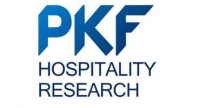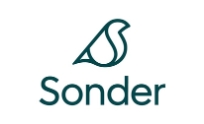
U.S. hotel utility costs under control (United States)
|
 |
U.S. hotel utility costs under control (United States)
|
Category: North America & West Indies / Carribean islands - United States - Industry economy
- Figures / Studies
This is a press release selected by our editorial committee and published online for free on 2011-09-20
by Robert Mandelbaum
After two years of declining revenues and profits, U.S. hotels turned the corner in 2010. According to the 2011 edition of Trends® in the Hotel Industry published by PKF Hospitality Research (PKR-HR), the average hotel in the nation achieved a 4.8 percent increase in total revenue during 2010. While 70 percent of the properties in the Trends® sample enjoyed an increase in total revenue in 2010, only 60 percent were able to convert that into more money on the bottom line.
Previous analysis conducted by PKF-HR has found that hotel managers struggle to control costs during the initial stages of lodging industry recoveries. There are many reasons for this:
• As hotels emerge from recessions, revenue growth tends to be driven by increases in occupancy versus ADR. Hotels will incur the extra variable costs associated with serving the additional guests.
• As market conditions improve, the amenities and services that were cut during the recession are reinstated.
• Hotel operators will re-hire staff and restore wage and salary reductions as operating performance improves.
• Management fees, franchise fees, and credit card commissions are charged as a percent of revenue. Accordingly, as revenue rises, so will these expenses.
Given the reasons above, it is not surprising that the costs and expenses to operate a hotel grew in 2010. Total operating expenses increased 3.4 percent during the year.
Fortunately for U.S. hotel operators, the continued high rate of unemployment resulted in a lack of pressure on wage rates. Labor costs for U.S. hotels increased a modest 2.7 percent from 2009 to 2010. On the other hand, the amount spent to purchase all other goods and services needed to operate a hotel (excluding management fees, property taxes, and insurance) climbed 5.3 percent.
Hotel Utilities in 2010
Part of the non-labor related hotel operating expenses are utility costs. Hotel utility department expenses consist mainly of energy related expenditures (i.e., electricity, gas, steam), along with water and sewer charges. In 2010, utility costs for the hotels in the Trends® sample averaged $2,251 per available room, or 4.4 percent of total revenue.
In 2010, the cost of electricity comprised the greatest portion of hotel utility expenses (60.5 percent). Water/sewer (21.5 percent) and gas/fuel (14.5 percent) made up the majority of the balance of utility costs. Because some older properties in cities such as Chicago and New York still use steam for heating air and water, this source of energy accounted for 3.5 percent of the utility dollars spent by our Trends® sample.
Of note is the relatively low growth in utility costs from 2009 to 2010. During the year, utility costs rose just 1.5 percent, substantially less than the long run annual average of 5.0 percent. When measured on a dollar per occupied room (POR) basis, utility costs for the Trends® sample declined from $9.53 POR in 2009 to $9.11 in 2010. In other words, utility costs did not rise commensurate with the significant 6.2 percent increase in occupied rooms.
The cost containment prowess of hotel operators in 2010 is further underscored when we consider the increase in the energy component of the consumer price index (CPI). From 2009 to 2010, the energy CPI rose 9.6 percent. Therefore, the slight 1.5 percent increase in hotel utility costs is even more impressive given the combination of the 6.2 percent increase in business volume (occupied rooms) and the 9.6 percent average rise in energy prices.
Rising Oil in 2011
As the price of oil has shot up, then down, during the first few months of 2011, many have asked: "How will this impact my business?" The rising price of oil, and resulting impacts on the price of gasoline and general health of the economy, can impact hotel performance in many ways besides utility costs.
Through the spring of 2011 we have heard from our clients that oil price increases have indirectly impacted operating expenses. Fluctuating oil prices has resulted in an overall increase in commodity prices. In turn hotel managers are reporting higher prices for several goods, particularly food and beverage items. In addition, the rise in gasoline prices has forced purveyors to add delivery surcharges to the cost of the goods and services they provide.
Hoteliers are also concerned about the impact of rising oil prices on the demand for lodging accommodations. An analysis performance by PKF-HR in early 2011 found that when oil prices increase beyond normal levels, individual consumer and business spending power is reduced, which in turn has a negative multiplying effect throughout the macro economy in general and the lodging industry in specific. Fortunately for U.S. hotel owners and operators, the price of oil has yet to rise above normal levels as of September 2011, and the impact on lodging demand has been minimal during the year.
Hotel Utilities in 2011
In theory, the rising price of oil and energy should impact hotel utility expenses. PKF-HR analyzed the relationship between changes in hotel utility costs and the energy CPI. The analysis found an extremely close correlation (i.e., 98 percent). This indicates that over the long run, hotel utility bills are greatly influenced by the prices charged by the local utility company.
According to the September 2011 forecast of Moody’s Analytics, the energy CPI is forecast to increase 15.4 percent over the entire year of 2011. On the surface, this does not bode well for U.S. hoteliers. However, we are reminded that just last year utility costs rose just 1.5 percent despite the 9.6 percent increase in energy CPI.
In 2008 PKF-HR conducted a survey of hotel managers on the topic of utility cost controls. At that time we identified three strategies that were being implemented and have most likely contributed to the suppression of utility costs the past few years:
• Fixed-price advance contracts with energy suppliers
• Derivative instruments to hedge energy price movements
• Implementation of “green” operating procedures to reduce consumption
Compared to operating expenses such as labor, food cost, and guest supplies, utilities have historically been labeled as relatively “uncontrollable” by management. However, a combination of conservation procedures, energy efficient products, and intelligent pricing tactics appears to have enabled hotel managers to control utility costs in the current difficult operating and market conditions.
Robert Mandelbaum is the Director of Research Information Services for PKF Hospitality Research. He is located in the firm’s Atlanta office. For more information about benchmarking your hotel’s utility costs, please visit www.pkfc.com/benchmarker. Portions of this article were published in the August 9, 2011 edition of HotelIndustryOnline.com.
|
|






